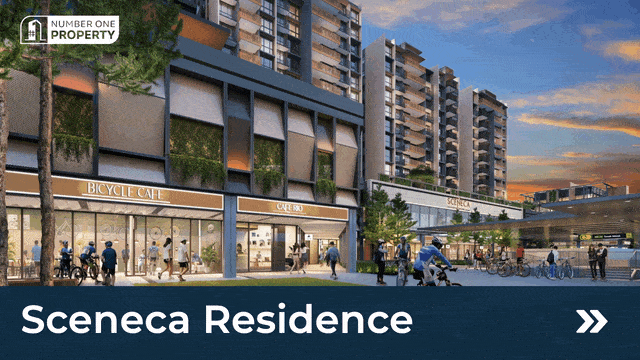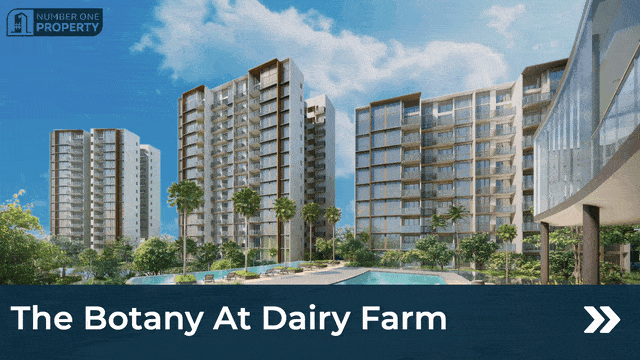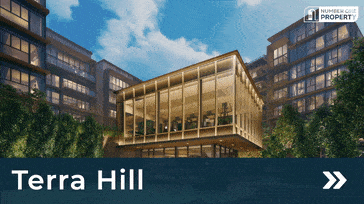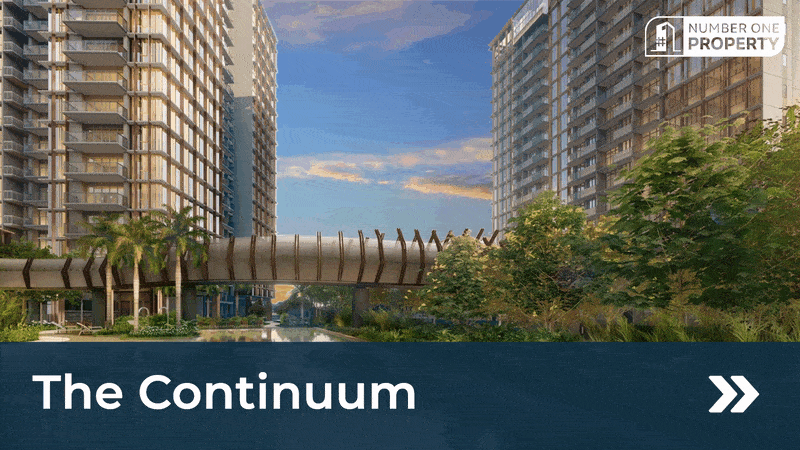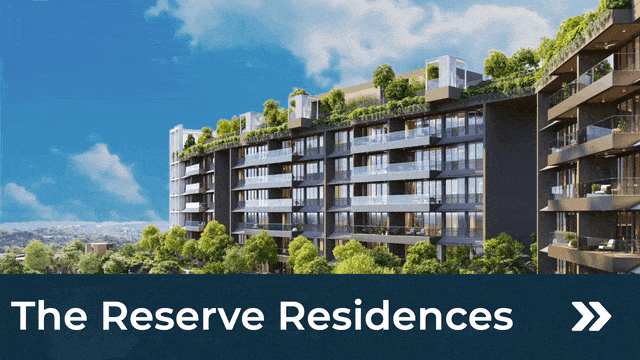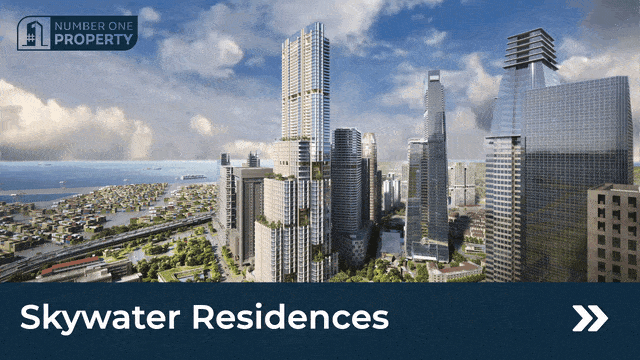List Of Parks In Singapore
| PARKS | TYPE | AREA | WEBSITE |
| Admiralty Park | Nature | 270,000 | https://www.nparks.gov.sg/gardens-parks-and-nature/parks-and-nature-reserves/admiralty-park |
| Ang Mo Kio Town Garden East | Community | 49,000 | https://www.nparks.gov.sg/gardens-parks-and-nature/parks-and-nature-reserves/ang-mo-kio-town-garden-east |
| Ang Mo Kio Town Garden West | Community | 206,000 | https://www.nparks.gov.sg/gardens-parks-and-nature/parks-and-nature-reserves/ang-mo-kio-town-garden-west |
| Bedok Town Park | Community | 146,000 | https://www.nparks.gov.sg/gardens-parks-and-nature/parks-and-nature-reserves/bedok-town-park |
| Bishan-Ang Mo Kio Park | Community | 620,000 | https://www.nparks.gov.sg/gardens-parks-and-nature/parks-and-nature-reserves/bishan—ang-mo-kio-park |
| Bukit Batok Nature Park | Nature | 357,000 | https://www.nparks.gov.sg/gardens-parks-and-nature/parks-and-nature-reserves/bukit-batok-nature-park |
| Bukit Batok Town Park | Nature | 422,000 | https://www.nparks.gov.sg/gardens-parks-and-nature/parks-and-nature-reserves/bukit-batok-town-park |
| Bukit Timah Nature Reserve | Nature reserve | 1,640,000 | https://www.nparks.gov.sg/gardens-parks-and-nature/parks-and-nature-reserves/bukit-timah-nature-reserve |
| Central Catchment Nature Reserve | Nature reserve | 28,800,000 | |
| Changi Beach Park | Coastal | 311,000 | https://www.nparks.gov.sg/gardens-parks-and-nature/parks-and-nature-reserves/changi-beach-park |
| Chek Jawa | Offshore islands | 1,000,000 | https://www.nparks.gov.sg/gardens-parks-and-nature/parks-and-nature-reserves/pulau-ubin-and-chek-jawa |
| Chinese Garden | Jurong Lake Gardens | 135,000 | |
| Choa Chu Kang Park | Community | 50,000 | |
| Clementi Woods Park | Community | 117,000 | |
| Coney Island Park | Offshore islands | 500,000 | |
| Dairy Farm Nature Park | Nature | 630,000 | |
| Dhoby Ghaut Green | Arts and heritage | 11,144 | |
| East Coast Park | Coastal | 1,860,000 | |
| Esplanade Park | Arts and heritage | 24,000 | |
| Fort Canning Park | Arts and heritage | 179,000 | |
| Gardens by the Bay | Arts and heritage | 940,000 | |
| Hindhede Nature Park | Nature | 95,000 | |
| Hong Lim Park | Arts and heritage | 9,400 | |
| HortPark – The Gardening Hub | HortPark and Southern Ridges | 23,000 | |
| Istana Park | Arts and heritage | 13,000 | |
| Japanese Cemetery Park | Community | 29,359 | |
| Japanese Garden | Jurong Lake Gardens | 135,000 | |
| Jurong Central Park | Community | 80,000 | |
| Kallang Riverside Park | Riverine | 48,000 | |
| Kent Ridge Park | HortPark and Southern Ridges | 465,000 | |
| Ketam Mountain Bike Park | Community | 450,000 | |
| Kranji Marshes | Nature reserve | 540,000 | |
| Kranji Reservoir Park | Riverine | 90,000 | |
| Labrador Nature Reserve | Nature reserve | 220,000 | |
| Labrador Park | Coastal | 120,000 | |
| Lower Seletar Reservoir Park | Riverine | 33,000 | |
| MacRitchie Reservoir Park | Riverine | 120,000 | |
| Marsiling Park | Community | 110,000 | |
| Mount Emily Park, Singapore | Community | 31,000 | |
| Mount Faber Park | HortPark and Southern Ridges | 565,000 | |
| National Orchid Garden | Singapore Botanic Gardens | 30,000 | |
| One-north Park | Community | 33,000 | |
| Pasir Ris Park | Coastal | 705,000 | |
| Pasir Ris Town Park | Community | 140,000 | |
| Pearl’s Hill City Park | Arts and heritage | 90,000 | |
| Pulau Ubin | Offshore islands | 10,200,000 | |
| Punggol Park | Community | 163,000 | |
| Punggol Point Park | Community | 163,000 | |
| Punggol Waterway Park | Riverine | 122,500 | |
| Raffles Place Park | Arts and heritage | 6,000 | |
| Sembawang Park | Coastal | 155,000 | |
| Sengkang Riverside Park | Riverine | 210,000 | |
| Sengkang Sculpture Park | Community | ||
| Singapore Botanic Gardens | Singapore Botanic Gardens | 630,000 | |
| Sisters’ Island Marine Park | Marine | 400,000 | |
| Sun Plaza Park | Community | 96,000 | |
| Sungei Buloh Wetland Reserve | Nature reserve | 1,300,000 | |
| Tampines Eco Green | Community | 360,000 | |
| Tanjong Pagar Park | Arts and heritage | 10,200 | |
| Telok Blangah Hill Park | HortPark and Southern Ridges | 345,000 | |
| The Southern Ridges | HortPark and Southern Ridges | 9,000 | |
| Tiong Bahru Park | Arts and heritage | 30,000 | |
| Toa Payoh Town Park | Community | 48,000 | |
| Upper Peirce Reservoir Park | Riverine | 50,000 | |
| Upper Seletar Reservoir | Riverine | 15,000 | |
| War Memorial Park | Arts and heritage | 16,000 | |
| Waterboat House Garden | Arts and heritage | ||
| West Coast Park | Coastal | 500,000 | |
| Woodlands Waterfront Park | Community | 110,000 | |
| Yishun Neighbourhood Park | Community | 77,000 | |
| Yishun Park | Nature | 139,000 | |
| Yishun Pond Park | Riverine | 23,000 | |
| Youth Olympic Park | Arts and heritage | 4,000 | |
| Zhenghua Park | Nature | 135,000 |
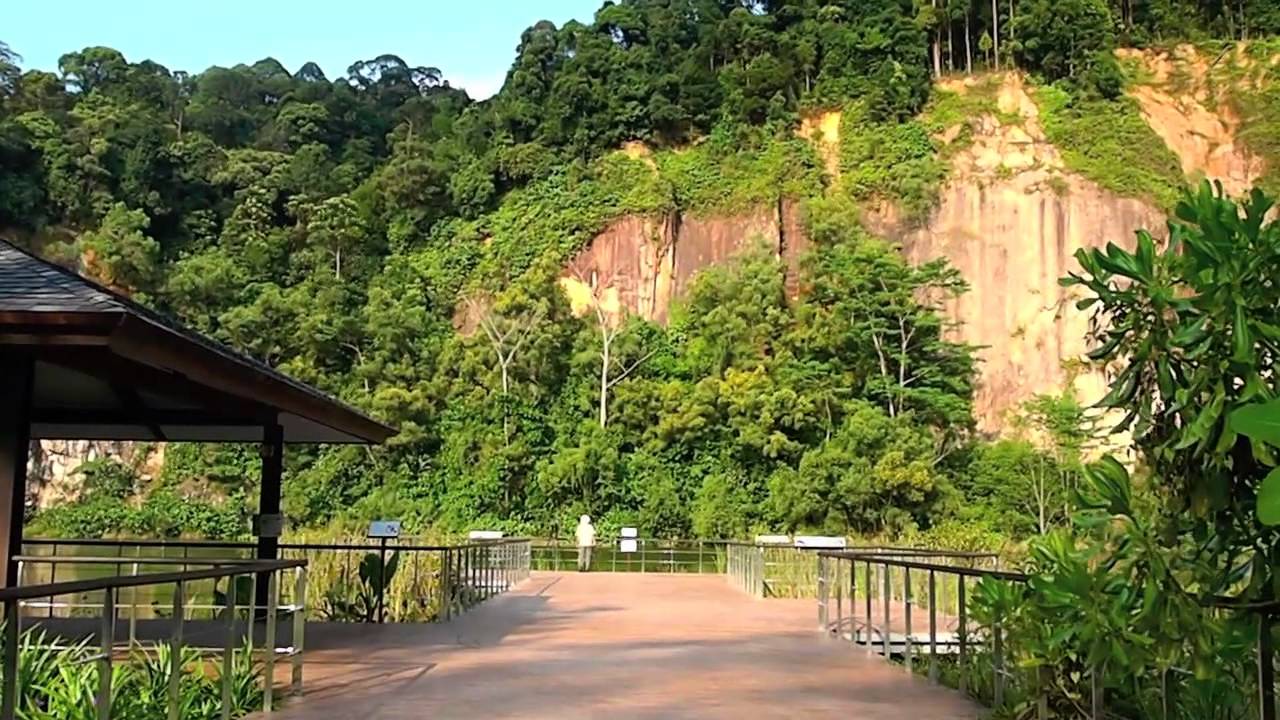
Parks in Singapore
Introduction :
Singapore’s national parks are impressive for the size of the country. Tourists can enjoy the picturesque refuge Singapore offers, one of Asia’s most popular tourist destinations that are now poised to win the title of the city in a garden. With more than 300 parks, four nature reserves, nature paths, jungle bridges, gorgeous flora, and spectacular animals, the municipality is a haven for those who enjoy the outdoors. Its concrete jungle and biodiversity-rich forests are home to a variety of creatures.
Which is the most famous park in Singapore?
You should visit these ten parks when you’re soon planning a trip to Singapore. They are ideal for relaxing your mind and spirit and getting close to nature.
- Bukit Timah Nature Reserve
- Singapore Botanic Gardens
- Sungei Buloh Wetland Reserve
- Labrador Nature Reserve
- East Coast Park
- HortPark
- Fort Canning Park
- Dairy Farm Nature Park
Bukit Timah Nature Reserve:
At just 163 meters, Bukit Timah Hill is Singapore’s highest point. Within a half-drive hour of the city’s center is the 164-hectare Bukit Timah Nature Reserve, the important rainforest reserve. After Hindhede Drive, it gets situated along Upper Bukit Timah Road. The tourist center is open from 8.30 a.m. to 6.30 p.m. and is free to enter. Weekends saw people visiting the reserve, from adolescent boys on mountain bikes to teams of serious joggers. You can wander the park’s well-marked pathways while taking in the sights, sounds, and scents of an actual primary forest.
Singapore Botanic Gardens:
Unquestionably one of Singapore’s most well-liked national parks and the only one to be designated a UNESCO World Heritage Site, this verdant tropical paradise in the middle of the city is a popular tourist destination. Singapore Botanic Gardens are a must-see since they’re ideal for strolls, family picnics, and energizing nature walks. As you travel through this botanical haven, get ready to be astounded by the expansive views, charming lakes with swans, and stunning Orchid Garden.
Sungei Buloh Wetland Reserve:
With its rich biodiversity and vibrant ecosystems, Singapore’s first ASEAN heritage park is a refuge for nature enthusiasts. With over 150 kinds of rare and exotic birds in the wetlands and enormous mangrove forests covering it, it is one of Singapore’s best national parks for understanding the workings of nature. Discover the numerous trails strewn throughout this natural gem to spot mudskippers, water snakes, birds, and monitor lizards. Kids will love visiting this incredible location because of the rangers’ friendliness.
Labrador Nature Reserve:
It is one of the top parks in Singapore that the National Parks Board seeks out because it provides a stunning sea vista and a haven of serenity amid the sounds of the city. A leisurely bike ride through Labrador Nature Reserve is a terrific way to spend an evening while taking in the sounds of rustling leaves and woodland birds. This hidden treasure is perfect for fishing, running, and watching the sunset. It is also easily accessible by public transit. There are two small children’s playgrounds to keep the little ones occupied.
East Coast Park:
East Coast Park in Singapore is the most well-known and large (1.85 sq km) park. It offers a range of activities, including water sports, cycling, rollerblading, bowling, and an 18-hole indoor mini-golf course. It gets built on land that gets reclaimed. Other amenities include a manufactured sandy beach, stores and kiosks, bathrooms, BBQ pits, and vacation cabins. Singapore is recognized for its citizens’ love of food and offers a wide variety of dining options. Eight seafood eateries make up the East Coast Seafood Centre. You must try the satay and the sambal stingray dishes (sweet peanut sauce and skewer, grilled meat served on sticks).
HortPark:
HortPark is a concept for gardening and leisure/recreation. There are 20 themed gardens, with figures from The Wizard of Oz featured in the Fantasy Garden. Then there is a tree-climbing area, a recycling garden, a herb and spice garden, and a water garden. HortPark serves as a bridge connecting Telok Blangah Hill Park and Kent Ridge Park.
Fort Canning Park:
Walking distance from Clarke Quay and City Hall, Fort Canning Park is a little patch of greenery in the heart of Singapore. This little park, part of Singapore’s history, is located next to the National Museum of Singapore and faces Orchard Road. It has a few colonial structures, including Sir Stamford Raffles’ residence, and is a well-liked location for art exhibitions and events.
Dairy Farm Nature Park:
One of the few national parks in Singapore with a facility for kids’ education, Dairy Farm Nature Park is a fantastic choice for momentarily escaping the concrete jungle. With the kids, go for a stroll through the winding hiking routes, where they may enjoy seeing colourful butterflies, squirrels, and species of birds in their natural habitat. The former Singapore Quarry is located at one end of the park and gets beautifully repurposed as a wetland with a viewing platform overlooking a pond and cliffs.
How many parks are there in Singapore?
Singapore is a sovereign island nation that is home to many parks. Singapore’s national parks map is a testament to the city-high state’s green factor because it includes over 300 parks and four nature reserves. The following is a list of Singapore parks that are still open. Singapore’s parks get governed by the National Parks Board, or NParks.The Park Connector Network connects most of these parks (PCN).
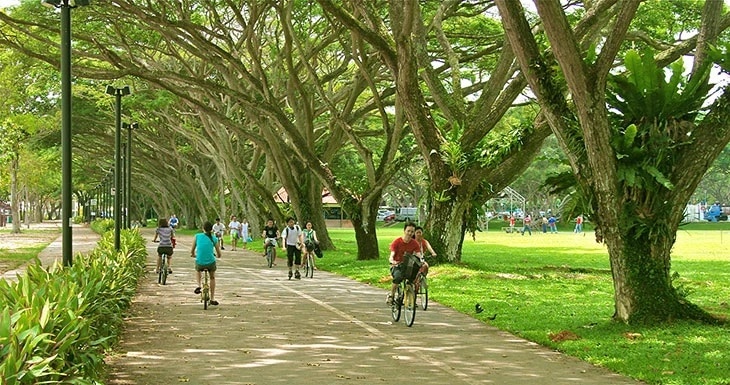
- Admiralty Park
- Ang Mo Kio Town Garden West
- Bedok Town Park
- Bishan-Ang Mo Kio Park
- Bukit Batok Nature Park
- Admiralty Park
- Bukit Batok Town Park
- Bukit Timah Nature Reserve
- Central Catchment Nature Reserve
- Changi Beach Park
- Chek Jawa
- Chinese Garden
- Choa Chu Kang Park
- Clementi Woods Park
- Coney Island Park
- Dairy Farm Nature Park
- Dhoby Ghaut Green
- East Coast Park
- Esplanade Park
- Fort Canning Park
- Gardens by the Bay
- Hindhede Nature Park
- Hong Lim Park
- HortPark – The Gardening Hub
- Istana Park
- Japanese Cemetery Park
- Japanese Garden
- Jurong Central Park
- Kallang Riverside Park
- Kent Ridge Park
- Ketam Mountain Bike Park
- Kranji Marshes
- Kranji Reservoir Park
- Labrador Nature Reserve
- Labrador Park
- Lower Seletar Reservoir Park
- MacRitchie Reservoir Park
- Marsiling Park
- Mount Emily Park, Singapore
- Mount Faber Park
- National Orchid Garden
- One-north Park
- Pasir Ris Park
- Pasir Ris Town Park
- Pearl’s Hill City Park
- Pulau Ubin
- Punggol Park
- Punggol Point Park
- Punggol Waterway Park
- Raffles Place Park
- Sembawang Park
- Sengkang Riverside Park
- Sengkang Sculpture Park
- Singapore Botanic Gardens
- Sisters’ Island Marine Park
- Sun Plaza Park
- Sungei Buloh Wetland Reserve
- Tampines Eco Green
- Tanjong Pagar Park
- Telok Blangah Hill Park
- The Southern Ridges
- Tiong Bahru Park
- Toa Payoh Town Park
- Upper Peirce Reservoir Park
- Upper Seletar Reservoir
- War Memorial Park
- Waterboat House Garden
- West Coast Park
- Woodlands Waterfront Park
- Yishun Neighbourhood Park
- Yishun Park
- Yishun Pond Park
- Youth Olympic Park
- Zhenghua Park
What is the oldest park in Singapore?
As one of Singapore’s most important historical landmarks and a green park, Fort Canning Park serves as both. The park’s numerous walking routes and exotic vegetation provide a haven from bustling city life. Other historical and artistic attractions can be found there, as well as an intriguing network of underground WWII tunnels.Fort Canning Park is a historical location and a welcome haven of calm vegetation in Singapore. When Singapore was a part of the Majapahit kingdom, archaeologists discovered Javanese artefacts from the 14th century on what was formerly known as Forbidden Hill. In addition to housing the shrine to Sultan Iskandar Shah, the final ruler of the former kingdom of Singapura, the hill is revered by Malays.
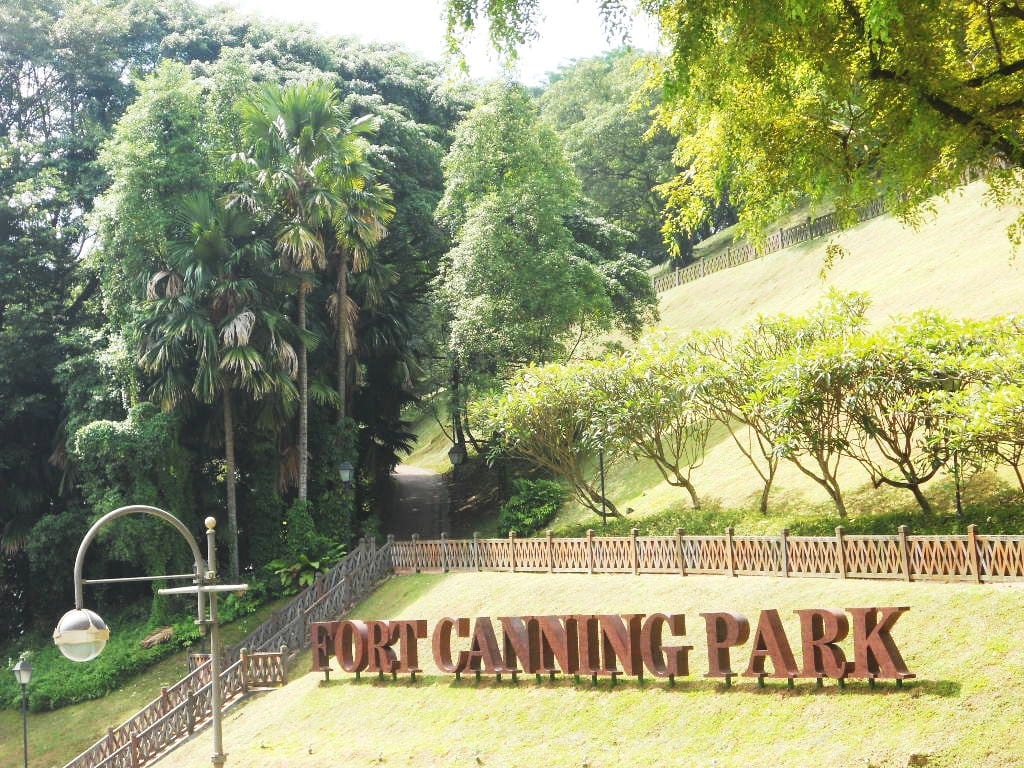
Stamford Raffles established his residence on this hilltop when he arrived in Singapore; it is today known as the Government House. Between 1859 and 1861, the British army constructed an arsenal, barracks, and hospitals in this location; these structures later came to be known as Fort Canning.Only the fort’s remains and a few well-preserved underground corridors remain today. A peaceful park that houses a historic Christian cemetery surrounds the fort. The burial monuments’ succinct but sincere inscriptions offer a fascinating and frequently moving glimpse into the lives of Singapore’s early colonial residents.
Fort Canning is now a frequently used location for outdoor artistic activities. The Singapore Dance Theatre is located at Fort Canning Centre at the top, while the Singapore Drama Centre is at the bottom of the hill. Many of Singapore’s young playwrights cleverly use the ruins as a background for their plays, and Ballet Under the Stars is a frequent event.
What is the largest park in Singapore?
East Coast Park:
With its almost 185 hectares (457 acres) of reclaimed shoreline land, East Coast Park wins the prize for being Singapore’s largest park. The designated cycle and skating lane is the ideal method to travel East Coast Park’s 15 km (9.3 mi) shoreline. On the weekends, you’ll find people travelling through the park on various vehicles, including quadricycles hauling entire families’ bicycles and scooters. The park is home to several bicycle rental businesses, most of which get situated close to parking lots or restaurants. The National Parks website allows you to reserve BBQ pit rentals at East Coast Park.
Admiralty Park:
The biggest park in the north is Admiralty Park, situated in Woodlands. The largest nature area within an urban park is located there, and the Sungei Cina River runs through the area’s mountainous topography. Twenty-six slides are currently present in the upgraded 7-hectare urban area. The playground takes advantage of the sloping ground to set up its three main play areas, Junior Play, Adventure Play, and Family Terracing Play. These areas are designed for kids of all ages and feature a variety of play structures that promote interactions between different age groups and groups of children.
As part of a program introduced by NParks in 2015, Admiralty Park also has an inclusive playground. Children with and without special needs can play together on inclusive playgrounds because they have the necessary physical infrastructure, or “hardware,” to do so.
How much of Singapore is Parks?
Singapore is currently one of the greenest cities in the world. The initial goal of Singapore’s greening initiative was to quickly cover the island with vegetation so that everyone could enjoy shade and access to green places. The park connector Network connected parks and skyrise landscaping gets promoted in new construction to enhance the quality of life.
To maintain our greening projects, NParks has more recently adopted biophilic designs for habitat restoration. NParks has preserved more than 7,800 hectares of green space in Singapore, including nature reserves, gardens, and parks connected by almost 370 km of park connectors, as a consequence of our efforts.
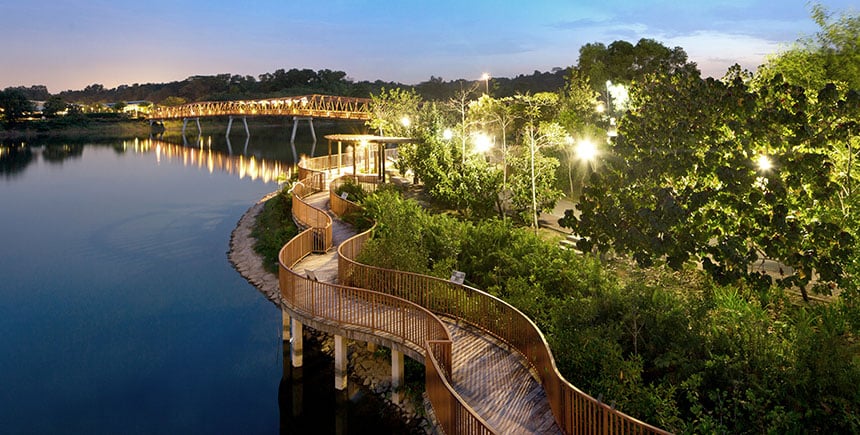
We must create a Singapore where citizens may enjoy a livable, sustainable, and climate-resilient Singapore in light of issues like climate change, which will result in increasingly extreme weather patterns, and growing urbanisation.
Singapore will become a City in Nature to achieve this. To further bring nature back into the urban setting, we will expand on what gets already accomplished. The Singapore Green Plan 2030, a national initiative to set our route for sustainable development, has NParks’ City in Nature concept as a central tenet.
Why do Singaporeans go to parks?
The “Garden City” moniker gets used a lot to describe Singapore. However, there hasn’t been much study on how parks affect the nation. This study aims to look into the motivations and attitudes of Singapore park visitors. On a weekend morning in the Singapore Botanic Gardens, 100 park visitors get randomly selected to participate in a survey. Most visitors to the park are in the age range of 40 to 59. In Singapore, going to the park is a social activity because 89% of respondents said they go with friends. The two most frequently mentioned reasons for going to the park are to relax and exercise.
The poll also showed that most park visitors expressed enjoyment while in the park and believe the feelings they experience there are essential to their general well-being. However, compared to their younger counterparts, senior park visitors are less likely to experience a sense of oneness with nature. There were age-related differences in the emotions felt in the park, but no other substantial differences existed between demographic groups. The results helped to clarify the characteristics of park visitors and their reasons for going there.
Why are parks important in Singapore?
Our eco-parks are crucial to promoting sustainable growth and reducing global warming, and Singapore intends to go even further. Singapore has promised to transform into a “City in Nature” during the next ten years, acting as its urban environment. In addition to having areas set aside for parks and nature reserves, “Nature Ways”—green barriers alongside roadways that connect our natural regions—will bring nature right to our doorstep, strengthening us in these uncharted times. Businesses can also contribute to making this a reality by conserving natural resources, encouraging environmentally friendly growth, offering sustainability training to encourage employees to protect the environment, and much more. To create a “City in Nature,” a whole community of performers is required.
The transition of Singapore into a City in Nature:
We are preserving and expanding Singapore’s natural capital island-wide, enhancing animal health and welfare standards in Singapore to make Singapore a City of Nature. To realise this vision, we will use these five essential strategies:
- Extend the network of nature parks
- Make gardens and parks more natural
- Bringing back nature to the urban environment
- Improve connections among Singapore’s green places
- Improve veterinarian treatment and animal management
The assistance and participation of the community will serve as a foundation for this.
Strengthening the network of nature parks:
Singapore’s four nature reserves serve to safeguard the essential representative and core ecosystems. They are the key suppliers of ecosystem services like clean water and air, necessary parts of Singapore’s natural capital. To safeguard these reserves from the effects of urbanisation and increase our natural capital, NParks has started constructing networks of nature parks around them. While allowing tourists to engage in outdoor activities with little impact on the nature reserves, these nature parks act as barriers and complementary habitats for Singapore’s unique flora and wildlife.
Enhancing the natural world in parks and gardens:
Nature gets emphasised by NParks in its various gardens and parks. These initiatives will complement NParks’ ambitions to create new green spaces and renovate already existing ones, which will increase our natural capital and give Singaporeans more access to the benefits of being in nature for their health and well-being.
Bringing nature back to the cityscape:
Greenery will be more incorporated into the built environment and closer to the daily lives of Singaporeans. To do this, National Parks will increase the amount of skyscraper greenery used in Singapore’s structures and infrastructure. Vertical green walls, green roofs, and rooftop gardens, which are examples of skyscraper greenery, will cool the buildings and make them more comfortable places to live, work, and play while further enhancing the beauty of our city.
Connecting Singapore’s green spaces more closely:
NParks will keep constructing its network of ecological corridors to link the habitats in nature reserves and nature parks to those in gardens and parks to maintain a healthy natural ecosystem. Native trees and plants will be planted along these “Nature Ways” to replicate the multi-tiered structure of a forest. Singapore’s pedestrians will appreciate tranquil, comfortable streets. Natural park connections that connect green spaces can be created by combining Nature Ways with foot and cycling routes.
Enhancing animal management and veterinarian care:
As our companions, neighbourhood animals provide a crucial function, and wildlife enhances the biodiversity of our urban ecosystem. As a result, the health and happiness of the animals in our community get entwined with our own.
The Animal and Veterinary Service works closely with partners in the veterinary and animal industries to increase capacities and enhance animal health skills, welfare, and management. It will make it possible for us to protect the interest of animals, the public’s health, and biodiversity.
Best of Singapore parks:
As with many other features of the City-State, Singapore is teeming with natural attractions. The nature parks in Singapore are very well-planned and constructed. Singapore’s zoo, aquarium, and night safari are all thrilling. The Reptile Park is also very popular. Jurong Bird Park is rightfully renowned throughout the world.The National Orchid Garden, housed in the magnificent Botanic Gardens, has a collection of more than 1,000 species and 2,000 hybrid orchids. See our list of Singapore’s top natural landmarks in the section below.
Labrador Nature Reserve:
There are several aspects of this magnificent nature park that appeal to families. Kids may easily ride scooters through the park because it has a wide beach promenade. One playground has a two-level play tower and a maze, and the other gets located next to a former World War Two bunker. View a copy of the Dragon Tooth Gate, walk along the Bukit Chermin Boardwalk, or investigate the remains of a fort. One of the best parks in Singapore for families is Labrador Nature Reserve.
Admiralty Park:
Children and families can enjoy the many slides in Admiralty Park. But make sure to also go north of the park, past the playground, to the wooded area. You can explore the mangrove boardwalk there. If you’re looking for more excitement, head to the shore and stroll along Singapore’s longest civilian jetty, which extends toward Malaysia from Woodlands Waterfront. While ambitious kids can scale the sky-high levels of the aerial playground, this windy seaside park is also ideal for cycling.
Jurong Bird Park:
An aviary and tourist destination, Jurong Bird Park is located in Jurong, Singapore. The largest bird park in Asia is situated on the western slope of Jurong Hill, the highest point in the Jurong neighbourhood. It is one of the parks run by Mandai Wildlife Reserve, which also runs River Wonders, Night Safari, and the Singapore Zoo.The Mandai Animal Group stated in 2016 that Jurong Bird Park would be moved to a much larger park at Mandai Lake Road by 2020. The three current wildlife parks would combine with a new rainforest park to establish the Mandai Wildlife Reserve, an integrated nature and wildlife precinct.
Chestnut nature park:
The largest natural area in Singapore is Chestnut Nature Park. The southern area began operations in 2016, and the northern region, which started operations in 2017, makes up this entity. Along the border of Central Catchment Nature Reserve, the park extends across a total of 81 hectares. Several bird species that get endangered worldwide call it home. The Straw-headed Bulbul and Brown-chested Jungle Flycatcher are two examples of these. You might also see some critically endangered Kayu Arang and Fan Palm plants.
Bishan-Ang Mo Kio Park:
Bishan-Ang Mo Kio Park, one of Singapore’s largest and most beautiful parks, is also one of its largest. Its gently rolling landscape gets mirrored by a river that was once a concrete canal but transformed into a river. It is understandable why otters want to visit the park frequently. Children are welcome to utilize the playgrounds, and the park also has a natural play area. Bishan-Ang Mo Kio Park offers a variety of ponds, including one with lotus plants and a dog trail.
Bukit batok nature park:
Previously a deserted quarry, Bukit Batok Nature Park is now a tranquil oasis. There is presently a size reflecting pool there. The park gets constructed in 1988, boasts breathtaking views, and is the perfect place for strolls while taking in the serenity of the surroundings. It covers 36 hectares and is accessible to people with disabilities.
Amenities:
- restrooms, drinking fountains
- Lookout points for shelter
- Benches at the playground
What to do:
- Seeing birds
- Flora includes a vast range of trees and plants, including orchids.
- Animal life, including species of butterflies, fish, monitor lizards, and other species
- Trekking a natural trail
- Go to the World War II memorial.
- From vantage points, one may view the quarry pool.
Hindhede Nature Park:
Hindhede Nature Park is a secret location near Bukit Timah Hill’s base. Huge open spaces can be reached by short treks to playgrounds that include swings and a zip line. If you go further, you might be able to view the open face of Bukit Timah Hill, the location of the former Hindhede quarry. For younger children, this park is very beneficial.
Singapore Botanic Gardens:
Singapore Botanic Gardens must include any list of the best family parks in Singapore. The Singapore Botanic Gardens are separated into four cores and have a history dating back more than 150 years. Swan Lake’s waters get located in the Tanglin Core, the Gardens’ oldest portion. While the Jacob Ballas Children’s Garden gets tucked away at the Singapore Botanic Garden’s Bukit Timah Core, the National Orchid Garden get located at the Central Core. Visit the Tyersall-Gallop Core to see the COMO Adventure Grove, Rambler’s Ridge, and Learning Forest.
Changi Beach Park:
Changi Beach Park is located in Singapore’s northeastern outskirts, facing the sea. Families can do various activities here, including riding bicycles, eating at a café, and barbequing into the night at one of the park’s BBQ pits. At Changi Beach Park, there are two playgrounds for kids: one is in the vicinity of Changi Village and has a nautical motif. The other is next to the BBQ pits. Since it gets situated in a unique area, the park is an ideal place to view jets landing at Changi Airport.
Sembawang Park:
In Singapore’s north, Sembawang Park is a serene haven next to the busy shipyards. Children may tackle a sizable Battleship Playground in Sembawang Park, which honors the diligent ship-building endeavor. Additionally, it includes BBQ pits for large gatherings, or families can visit the historic Beaulieu House for some regional cuisine.
Pasir Ris Park:
Numerous attractions get located in Pasir Ris Park, which runs out along the shore. With various engaging play zones, the enormous Pasir Ris Park Playground at Elias Road offers hours of entertainment. Rent a bike, then ride it all across the big park. Take a hike through a mangrove swamp or climb a tower for bird watching.
Jurong lake gardens:
In Singapore’s central region lies a brand-new public garden called Jurong Lake Gardens. Ninety hectares of breathtakingly lovely land make up the grounds. Even if the Chinese and Japanese gardens haven’t officially opened, there is still a lot to see at this family-friendly location.The Lakeside Garden has gorgeous landscaping and plenty of nature pathways. Unmissable attractions include the Jurong Lake boardwalk, home to an abundance of birdlife. Why not try Passion Wave for your other watersports adventure? Your trip will undoubtedly be one you’ll never forget.
Highlights:
- Twenty people are the maximum for group tours.
- The Lakeside MRT station leads to Jurong Lake Garden.
- The majority of the space is handicap accessible and is a smoke-free environment.
- Prior authorization gets required before filming or taking photos.
Amenities:
- Shelters
- Event locations
- Restrooms
- BBQ grills
- outlets for food and drink
- Restaurant Fusion Spoon
Things to do:
- The healing garden
- An insect maze
- Observing birds
- Working out and exercising
- The biodiversity tour
- Solemnization of the wedding
- Grasslands
Kranji Coastal Nature Park:
The Kranji Coastal Nature Park’s family-friendly addition to the Sungei Buloh Wetlands Reserve includes a junior wetland walk, a children’s obstacle course, and exhibits that describe the reserve’s ecosystem. Embark on a trail hike and cross the water on a boardwalk.
West Coast Park:
The incredibly entertaining Adventure Playground at West Coast Park is well-known. It is understandable why West Coast Park gets regarded as one of the great parks in Singapore for families, with play areas catered to children aged two to twelve. West Coast Park, however, offers more than just a playground. Fly a kite in the Grand Lawn, embark on a journey down a boardwalk through a mangrove swamp, or rent a pedal go-kart and take on the challenging twisting road course.
Thomson nature park:
Thomson Nature Park is Singapore’s newest nature park and covers a 50-hectare area. The park is situated between Upper Thomson Road and Old Upper Thomson, near Central Catchment Reserve. The park is unique because a Hainan village once stood where it now stands. The land became heavily forested after the village’s residents left in the 1980s, allowing nature to take over. Among the animals are the leopard cat, sambar deer, and Sunda pangolin. Here, it’s also possible to see the endangered Raffles’ banded langur.
Central Catchment Nature Reserve:
In Singapore, this big reserve forest is a stunning, tranquil location with an overwhelming sense of calmness. Central Catchment Nature Reserve would likely come close to pleasing you if your notion of an authentic nature adventure is to hike for hours on end while constantly running the danger of getting lost. This 2,000-hectare reserve comprised the woodlands around the Upper Peirce, Peirce, MacRitchie, and Seletar Reservoirs. The Upper Peirce Forest is accessible via the Old Upper Thomson Road. Since there is neither an entrance fee nor a visitor center, you are on your own. In contrast to the Bukit Timah Nature Reserve, the forests in the Central Catchment are secondary forests.


